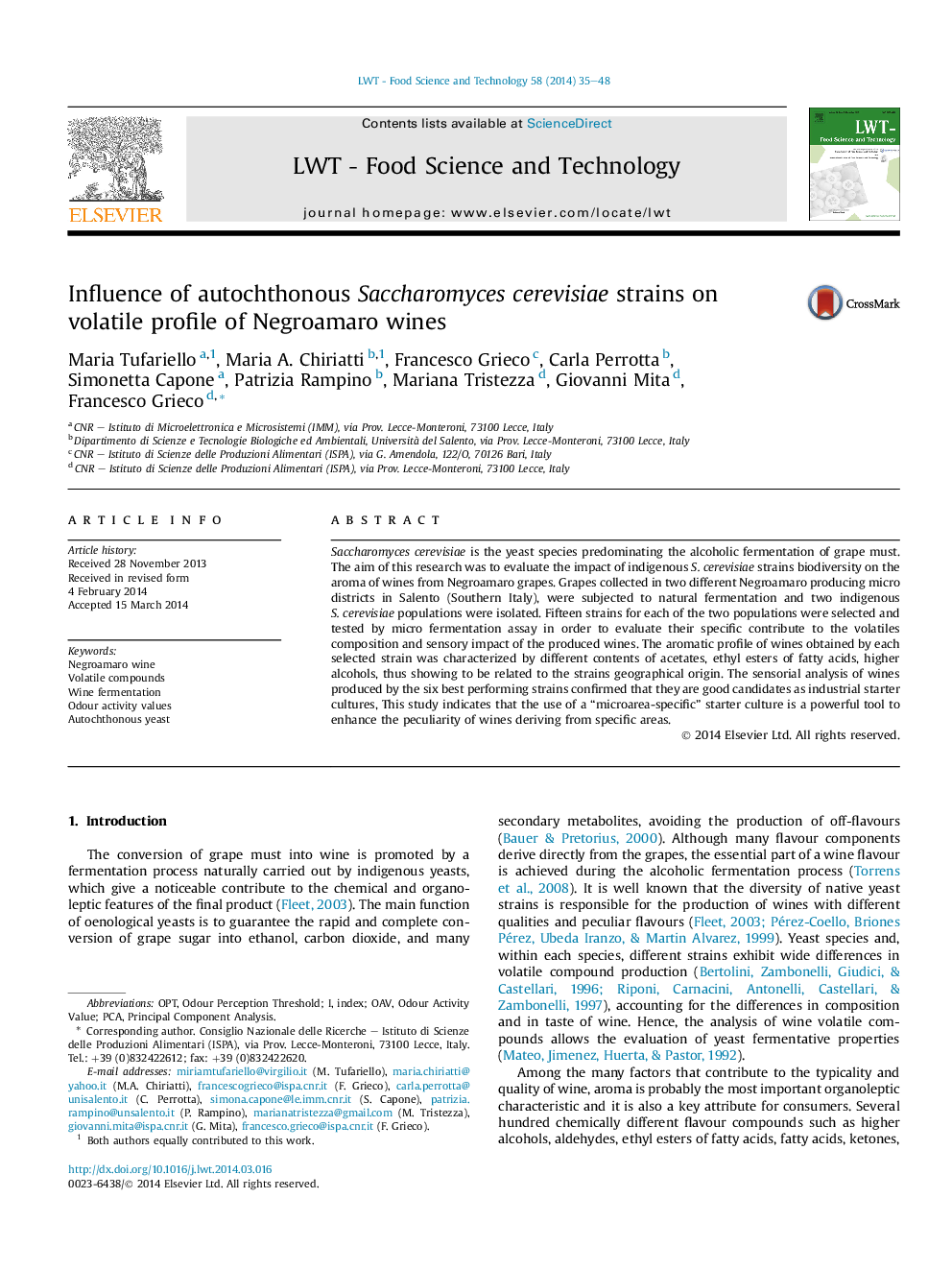| Article ID | Journal | Published Year | Pages | File Type |
|---|---|---|---|---|
| 6404023 | LWT - Food Science and Technology | 2014 | 14 Pages |
â¢Saccharomyces cerevisiae populations were isolated from two Negroamaro-producing areas in Salento.â¢Autochthonous S. cerevisiae strains determine volatile profiles of Negroamaro wine.⢓Microarea-specific” starter cultures can be a tool to enhance the peculiarity of typical wines.
Saccharomyces cerevisiae is the yeast species predominating the alcoholic fermentation of grape must. The aim of this research was to evaluate the impact of indigenous S. cerevisiae strains biodiversity on the aroma of wines from Negroamaro grapes. Grapes collected in two different Negroamaro producing micro districts in Salento (Southern Italy), were subjected to natural fermentation and two indigenous S. cerevisiae populations were isolated. Fifteen strains for each of the two populations were selected and tested by micro fermentation assay in order to evaluate their specific contribute to the volatiles composition and sensory impact of the produced wines. The aromatic profile of wines obtained by each selected strain was characterized by different contents of acetates, ethyl esters of fatty acids, higher alcohols, thus showing to be related to the strains geographical origin. The sensorial analysis of wines produced by the six best performing strains confirmed that they are good candidates as industrial starter cultures, This study indicates that the use of a “microarea-specific” starter culture is a powerful tool to enhance the peculiarity of wines deriving from specific areas.
